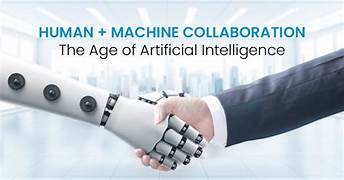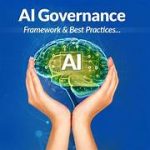Human-AI Collaboration: Enhancing Synergy in Mixed Teams
In today’s rapidly evolving technological landscape, the collaboration between humans and artificial intelligence (AI) systems is reshaping how work is conducted across industries. Human-AI collaboration leverages the strengths of both entities—human creativity and decision-making combined with AI’s computational power and precision—to enhance productivity, innovation, and problem-solving.
This article delves into the principles, benefits, challenges, and best practices for fostering effective synergy between humans and AI in mixed teams.
The Essence of Human-AI Collaboration
Human-AI collaboration refers to the cooperative interaction where humans and AI systems work together to achieve shared goals. Unlike traditional automation, where machines operate independently, this collaboration emphasizes complementarity. Humans excel at tasks requiring emotional intelligence, ethical judgment, and adaptability, while AI shines in processing vast data, recognizing patterns, and performing repetitive tasks accurately.
Examples of human-AI collaboration include healthcare diagnostics, where AI aids doctors in analyzing medical images, and customer service, where AI chatbots handle routine queries, leaving human agents to address complex issues.
Benefits of Human-AI Collaboration
1. Enhanced Efficiency
AI systems can perform repetitive and data-intensive tasks faster than humans, freeing up time for professionals to focus on strategic and creative work. This division of labor streamlines workflows and increases overall productivity.
2. Improved Decision-Making
AI’s ability to analyze large datasets and identify patterns complements human intuition and contextual understanding. For example, in finance, AI provides insights for investment decisions, while human analysts consider market nuances and long-term strategies.
3. Innovation Acceleration
Collaboration fosters innovation by merging AI’s computational creativity with human ingenuity. In design and engineering, generative AI tools propose novel concepts that humans refine into practical solutions.
4. Scalability
AI enables organizations to scale operations efficiently. For instance, in customer support, AI-powered systems can handle millions of interactions simultaneously, escalating only unique or high-priority cases to human agents.
5. Personalization
AI systems analyze individual preferences and behaviors, allowing humans to deliver highly personalized experiences in fields like marketing, healthcare, and education.
Challenges in Human-AI Collaboration
1. Trust and Reliability
For effective collaboration, humans must trust AI systems. This requires transparency in AI decision-making processes and clear communication of its limitations.
2. Skill Gaps
Employees may lack the technical skills needed to interact effectively with AI tools. Bridging this gap through training and education is critical for fostering collaboration.
3. Ethical and Bias Concerns
AI systems can perpetuate biases present in training data, leading to unfair or unethical outcomes. Ensuring ethical AI use is a shared responsibility between developers and users.
4. Integration Complexity
Seamlessly integrating AI into existing workflows and ensuring compatibility with human work processes can be challenging.
5. Overreliance on AI
Relying too heavily on AI can undermine human expertise and critical thinking. Striking a balance between automation and human input is essential.
Best Practices for Effective Human-AI Collaboration
1. Define Roles Clearly
Establish clear boundaries between tasks suited for AI and those requiring human involvement. For example, in journalism, AI can draft articles based on data, while humans add narrative depth and contextual analysis.
2. Invest in Training
Provide employees with the skills to understand and use AI tools effectively. Training programs should focus on both technical proficiency and ethical considerations.
3. Foster Transparency
AI systems should be designed to explain their reasoning in understandable terms. Transparency builds trust and allows humans to make informed decisions when working with AI.
4. Promote Iterative Feedback
Encourage continuous feedback between humans and AI systems to improve performance. For instance, in healthcare, doctors can refine AI diagnostic tools by providing feedback on their accuracy.
5. Adopt a Human-Centric Approach
AI systems should be developed with a focus on augmenting human capabilities rather than replacing them. This ensures alignment with human values and priorities.
Applications of Human-AI Collaboration
1. Healthcare
AI assists medical professionals in diagnosing diseases, predicting patient outcomes, and personalizing treatments. Human doctors validate AI recommendations, ensuring accuracy and empathy in patient care.
2. Education
AI-driven tools provide personalized learning experiences, while teachers use these insights to address individual student needs and foster critical thinking.
3. Manufacturing
Collaborative robots (cobots) work alongside human workers in factories, handling repetitive tasks while humans focus on quality control and innovation.
4. Creative Industries
In fields like music, art, and writing, AI generates ideas and drafts that artists refine into unique creations. For example, AI can compose melodies that musicians enhance with emotional depth.
5. Customer Service
AI chatbots handle routine queries, allowing human agents to resolve complex or sensitive issues. This combination enhances customer satisfaction and operational efficiency.
Future Directions in Human-AI Collaboration
1. Adaptive AI Systems
Future AI systems will adapt to individual user preferences and working styles, enhancing collaboration. Adaptive AI can dynamically adjust its role based on context and user input.
2. Interdisciplinary Research
Collaboration between AI developers, psychologists, and domain experts will lead to systems better aligned with human behaviors and needs.
3. Enhanced Explainability
Advances in explainable AI (XAI) will make AI decisions more transparent and understandable, fostering trust and usability.
4. Ethical Frameworks
Developing comprehensive ethical guidelines for human-AI collaboration will ensure responsible and fair use of AI technologies.
5. Augmented Reality (AR) Integration
Combining AI with AR will create immersive collaborative environments, enabling real-time interaction between humans and AI in fields like design and training.
Conclusion
Human-AI collaboration represents a paradigm shift in how tasks are accomplished across industries. By combining the strengths of humans and machines, this partnership fosters innovation, efficiency, and adaptability. However, realizing its full potential requires addressing challenges such as trust, ethical concerns, and skill gaps. With careful planning, robust training, and a human-centric approach, the synergy between humans and AI can drive transformative progress, shaping a future where technology complements and enhances human capabilities.


